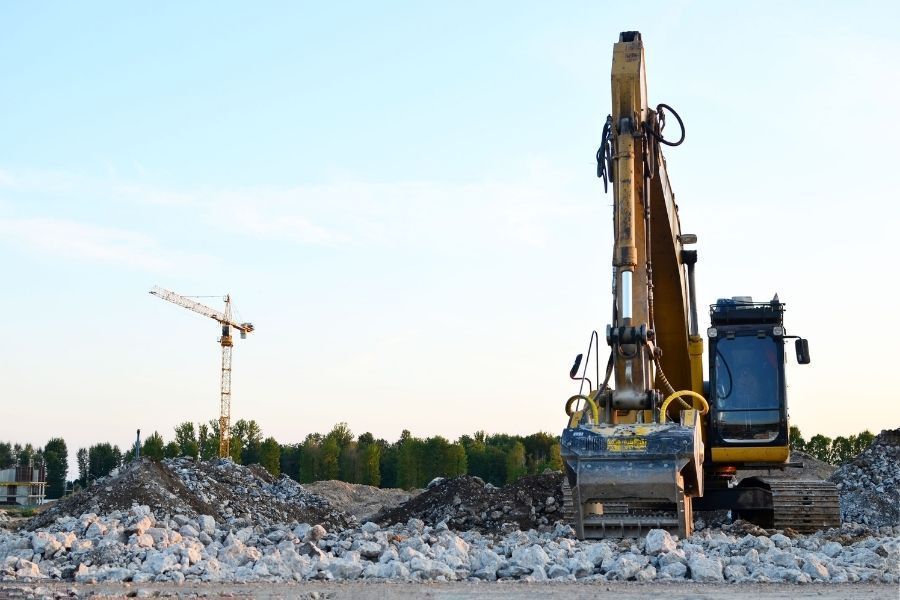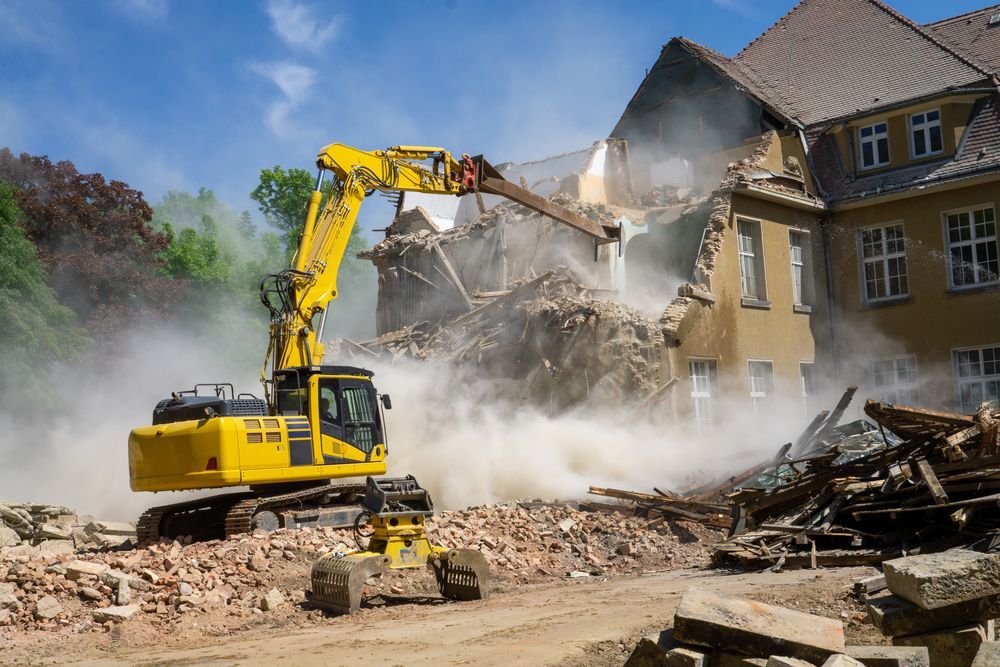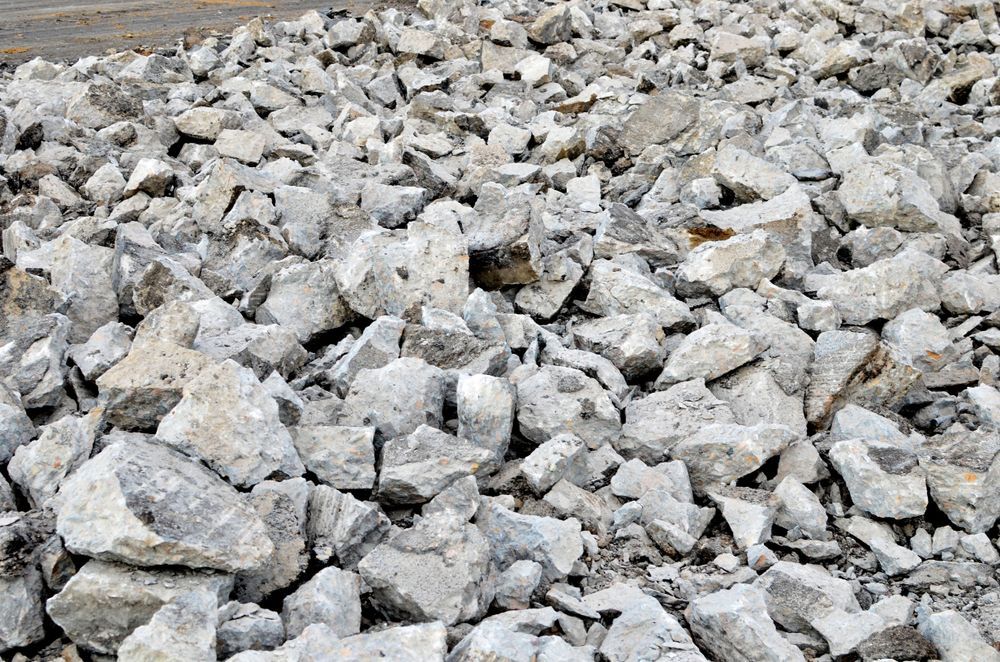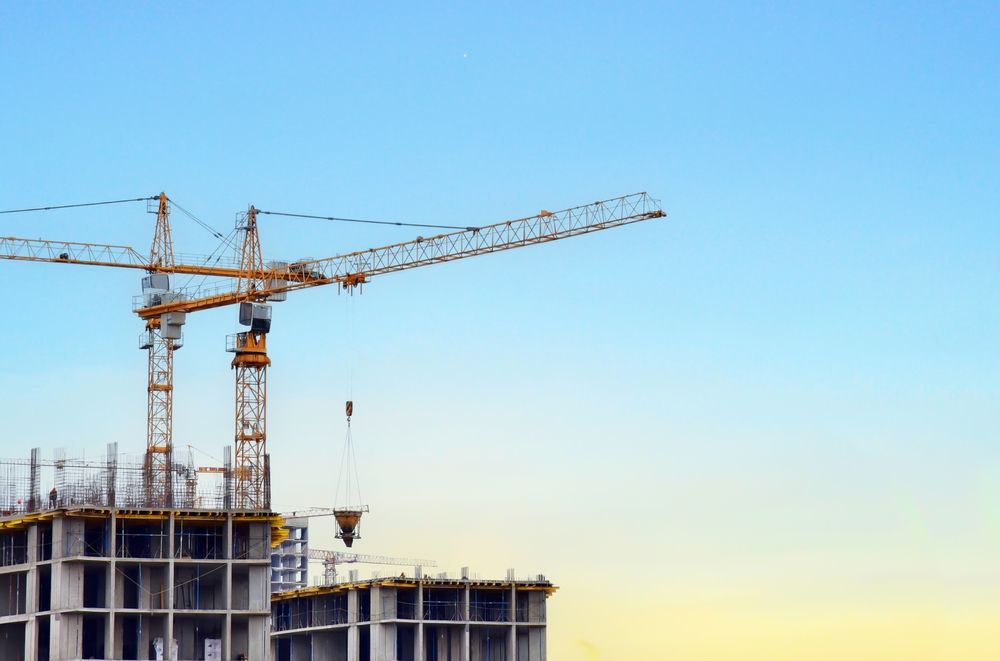Share this article:

A byproduct of any demolition is going to be construction waste. When buildings come down or interior renovations are done, there’s brick, drywall, steel, and more that comes down with it. And in order for a new build to commence or a fit-out to take place, this debris that comes with any demolition is first going to have to be removed. On a commercial demolition, you’re never going to be able to fit all this waste into contractor bags. But in order to know how many dumpsters and other heavy equipment you’ll need, it’s imperative that you have a general idea of how much waste you’re going to need to handle. Determining this isn’t always easy.
In this post, we’ll share the formula for
how to calculate demolition waste and other factors that you may need to consider when accurately determining the amount to expect for your next demo job. Here’s a closer look:
Calculating Demolition Debris Waste: What You Need to Know
How do you go about calculating demolition preparation? There’s an equation for that? Yes, this formula – while basic – can present an estimate of how much waste you can expect to create for any demolition job. All you’ll need is to know some basic variables, like the property dimensions. After you have these numbers, all it takes is plugging in some simple numbers to do some basic math. While this equation can provide a snapshot of expected debris waste, it’s not likely to be exact. But it should give you a good idea of how many dumpsters you’ll need and any other heavy equipment you’ll want to mobilize to the site. In the next section, we’ll take a closer look at this basic equation and break down the math behind it. Let’s start with a brief overview of demolition preparation.
Overview of Demolition Preparation
There’s a lot involved in coordinating a safe, effective demolition. Here’s a brief overview of some of the key considerations as you plan a building demolition:
- Work with the city and government offices on permits and regulatory standards.
- Meet with demolition specialists to subcontract the project.
- Off-load any items to be salvaged from the property.
- Review the final plans before demolition.
- Make sure utilities are shut off.
How to Calculate Demolition Waste
Let’s get to this equation:
- Length (x) width (x) height (x) 1/3 (/) 27
In other words, you’ll first want to calculate the area of the property by multiplying length times width times height. It’s best to calculate this variable in feet. After you have the area, multiply that by one-third and then divide the number you get by 27. This last step converts the number into cubic yards, which is a helpful measure to have when it comes to reserving dumpsters.
Breaking Down the Equation
Size of the demolished property:
Arguably the most important component in determining how much demolition debris you’ll have is the area of the property that’s coming down. Calculate this by multiplying the length by width by height. You should be able to easily determine this by checking the original building blueprints. If worst comes to worst, you can measure yourself. It’s just important to take floors into consideration as well as intersecting walls.
Airspace:
Multiplying the total area of the property by 1/3 might seem like a strange step, but it’s very important. This one-third calculation is used to account for the airspace in the building. In other words, it helps take into account the empty spaces in the rooms and on the floors of the building. When a property comes down, it’s not completely full of materials and jammed wall-to-wall with various contents. There’s empty space – and usually in any property, this empty space accounts for about one-third of it. That’s why you can’t forget this step when calculating post-demolition waste.
Cubic yards:
The final step of the equation is converting the figure into cubic yards. As we noted above, this is an important step because dumpster capacity is typically measured in cubic yards. This won’t just help you better determine how many dumpsters you need, but what size dumpsters you need as well. Dumpsters are available in sizes ranging from 10 yards to 40 yards.
Why You Should Calculate Demolition Waste
The amount of demolition waste is imperative to determine not just the number and size of dumpsters you’ll need to bring on site, but the heavy equipment needed to move this debris and load it into the dumpsters for site removal. Too many dumpsters and too much equipment, and the project can quickly go over budget. Make sure your next demolition site is optimized.
Other Considerations When Calculating Demolition Waste
As we noted in the opening, the formula we’ve covered here isn’t a perfect science – but it’s likely to get you pretty close when it comes to calculating the total amount of post-construction waste to expect.
Noting that the calculation is an estimate, another important consideration is the extent of the demolition. For instance, while many buildings are fully demolished, some may also undergo selective demolition. This may involve demolishing part of a building or clearing out the interior of a building while leaving most of its structure, MEP, and more in place. In the case of selective demolition, the formula we’ve outlined might not provide a very accurate estimate.
Another consideration is the heavy-duty equipment you’ll need to move the demolition waste into the dumpsters for removal. While mobilizing the right number and right-sized dumpsters is important, it’s also important that you mobilize the appropriate number of excavators, wheel loaders, crawler loaders, and more.
Contact Alpine Demolition Today
For more information on how to calculate the amount of post-demolition waste you can expect on a project,
contact Alpine Demolition
today.



